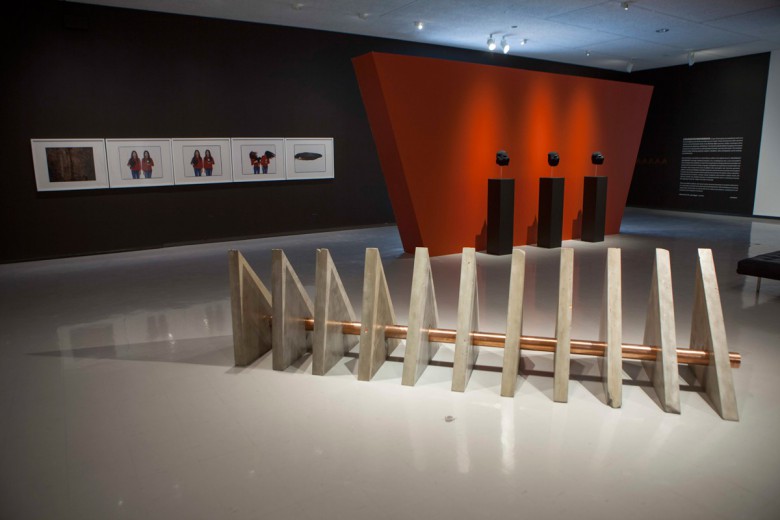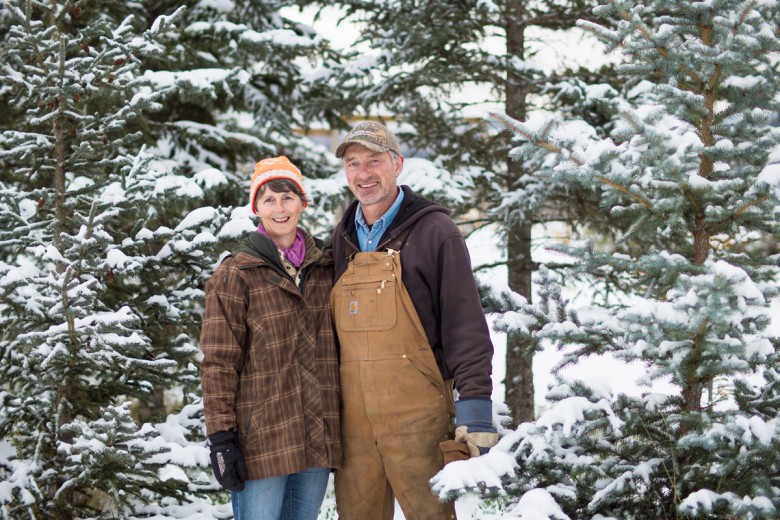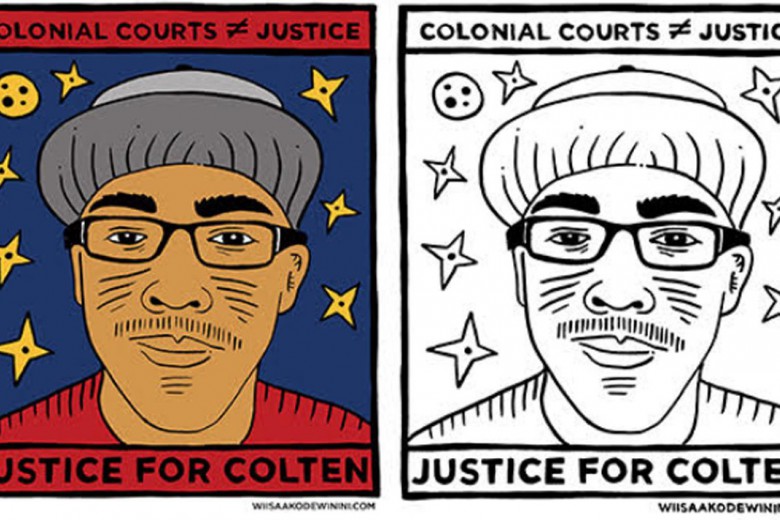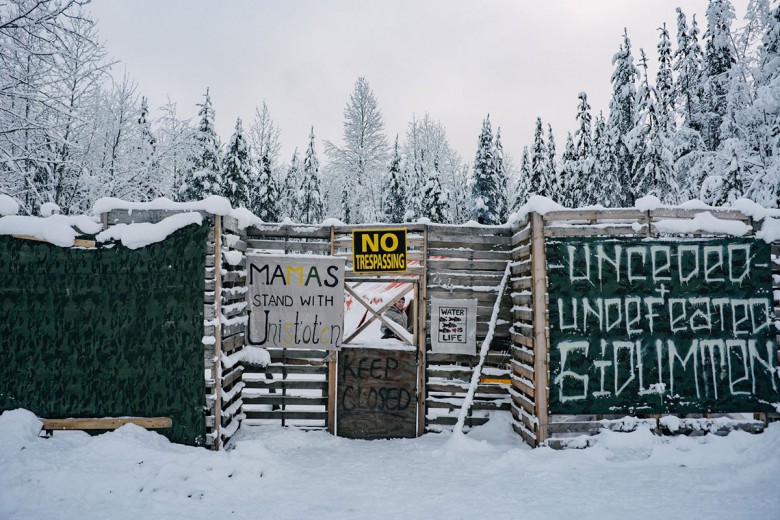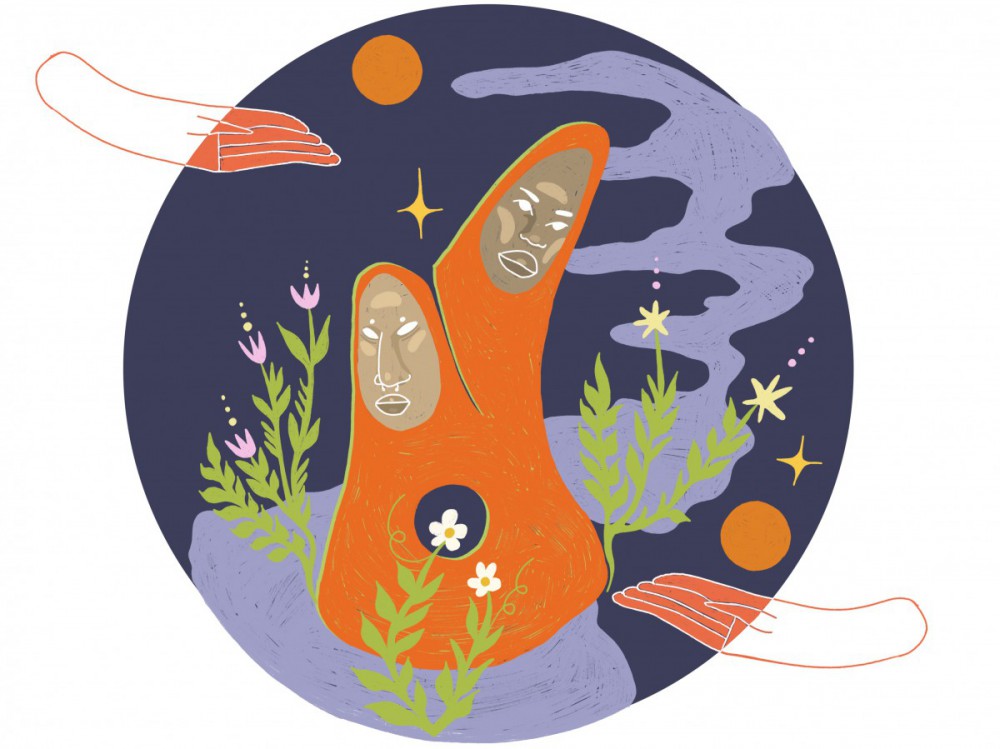
kaya joan
In December 2016, APTN published an article questioning Joseph Boyden’s claims to Indigenous identity. An author and frequent commentator for Indigenous issues, Boyden claimed at different times in his life to have familial ties to the Métis, Mi’kmaq, Ojibway, and Nipmuc Peoples. He took up a lot of public space on the topic of the Indigenous experience, and won many awards – including cash awards – for his written works.
We’re not writing this article to further investigate Boyden’s story, or those of the dozens of other pretendians (people falsely claiming Indigenous identity) revealed more recently, as there is already plenty of excellent analysis by Indigenous writers on Boyden’s and others’ identities and the implications of these pretendians for Indigenous communities. We – Ciann and Ann Marie – bring up the investigation into Boyden’s identity because as scholars and organizers active in the movement for Black and Indigenous liberation, we are deeply concerned about the consequences of pretendians for Afro-Indigenous people and for Black and Indigenous alliances.
Afro-Indigenous people face anti-Black racism, Indigenous erasure, and lateral violence in their Indigenous communities. Many have few ties to their communities, territories, and cultures.
Ciann is a Black woman, scholar, and mother hailing from Jamaica. She is multi-racial with Afro-, Indo-, and Euro-Jamaican ancestry. Ann Marie is a Two-Spirit mixed-blood Afrikan Nova Scotian and First Nation Mi’kmaq from the territory of Mi’kma’ki, living and working on the territories of the Anishinaabe, Haudenosaunee, and Neutral peoples. They are an Afro-Indigenous L’nu, community activist, and scholar.
Pulling from our collective work with Indigenous, Black, and Afro-Indigenous communities, we look at the impact of pretendians and the heightened surveillance of Indigenous identity on Afro-Indigenous people, how Indigenous sovereignty movements can make more space for racially ambiguous and Black-passing Indigenous Peoples, and how expanding definitions of Indigeneity to include displaced Black people is key for Indigenous and Black survival.
What is the pretendian problem?
Over the last few years, several prominent writers, artists, and scholars in Canada and the U.S. who claim Indigenous identity have faced scrutiny for fraudulent and exploitative claims and misrepresentations of genetic, cultural, and familial links to Indigenous communities. This long list includes Boyden, judge and law professor Mary Ellen Turpel-Lafond (who received numerous honorary degrees), and award-winning filmmaker Michelle Latimer.
White people have accrued some of the highest appointments and honorary degrees, as well as the acclaim, status, wealth, and recognition that accompany them, by pretending to be Indigenous. In other words, the people who have been able to best perform what authors Robert F. Berkhofer and Daniel Francis regard as the white man’s “imagined Indian” are in fact white, privileged people themselves. Though most pretendians are white, there are rarer cases where racialized people have committed pretendianism fraud, as is the case with twins Amira and Nadya Gill who, abetted by Karima Manji who claims to be their adoptive mother, defrauded the Kakivak Association and Qikiqtani Inuit Association by receiving grants and scholarships to fund their education that were reserved for Inuit students. But unlike many of their white counterparts, all three women of colour have faced serious consequences: they’ve each been charged by the RCMP for fraud over $5,000 for falsely claiming to be Inuit.
Institutional protocols verifying Indigenous identity risk further isolating Afro-Indigenous people from their communities.
On the other hand, many white pretendians who accrued more wealth and stature than the Gill twins and Karima Manji have been let off the hook. For example, Carrie Bourassa raked in an annual salary of at least $208, 555 as a former University of Saskatchewan professor and former scientific director of the Indigenous health arm of the Canadian Institutes of Health Research. Bourassa, who sported ribbon skirts and an obvious tan, claimed to be Métis, Anishinaabe, and Tlingit, until an investigation in 2021 found her to be European with no Indigenous ancestry. However, beyond no longer holding those positions and the public shame of her fraudulence, it doesn’t appear that she has faced any other consequences.
The Implications for Afro-Indigenous people
In response to the overwhelming number of white pretendians fraudulently claiming Indigenous identity, many institutions and organizations have implemented more rigorous protocols asking people who claim to be Indigenous to verify their identities through mechanisms such as status cards and community connections. Protocols ensuring that resources and opportunities for Indigenous people are given to Indigenous people with relationships to their communities are important and necessary. But, if not done thoughtfully, we worry the protocols will further isolate Afro-Indigenous people from their communities and exclude them from opportunities and resources intended for Indigenous people. It could cause the doubling-down of paper genocide – i.e. the disappearing of Indigenous peoples through settler-legislated definitions and documentation as “proof” of Indigeneity – in the vein of the Indian Act.
Afro-Indigenous people have a rich, over-400-year-long history in Canada, and Indigenous and Afrikan Peoples have long resisted and fought colonizers and enslavers together.
Let’s look at Canada’s history and foundation to understand how we ended up here. Conversations about Indigenous identity in Canada, much like in the U.S., are not new – who can and cannot claim to be Indigenous has been a hotly debated and contentious issue since colonizers first arrived and imposed their laws. Through colonial policies and systems such as the Indian Act, the residential school system, the Sixties Scoop, and the current foster care system, Canada has tried to assimilate and redefine Indigenous people into extinction.
Meanwhile, to build its empire on stolen land, the settler colony presently known as Canada enslaved thousands of Afrikan people. Though Canada has since re-storied its history to erase its participation in and profiteering from the enslavement trade, popularizing the white saviour narrative of Canada as the terminus of the underground railroad, the fact remains that white settlers in the territories of present-day Canada enslaved people until 1834 and continued enslavement through systems such as indentured servitude, where people laboured in exchange for transport, shelter, and food, and got no wages for their work. Furthermore, to survive, enslaved Afrikan peoples who fled to Canada from the U.S. then ran back to the U.S. or to ancestral lands in Afrika to escape the racism and death threats they suffered north of the imperial border.
In the building of empire, the fewer Indigenous people protecting their territories, the more land and resources Canada has to exploit.
The logic behind regulating Indigenous and Black identity in Canada is simple: if there are fewer Indigenous people and thus fewer strong and sovereign Indigenous Nations protecting their territories, Canada has more land and resources to exploit. Conversely, in the building of empire, the more enslaved Black people whom white settlers could lay claim to through the one drop rule, the more free labour they had to extract resources from stolen Indigenous lands.
Understanding Canada’s colonial underpinnings and the history of Black and Indigenous people on these lands is critical to unpacking the implications of Indigenous identity. Afro-Indigenous people are often thought to be from cities, and it is usually supposed that cities are where Black and Indigenous people most frequently connect. But Afro-Indigenous people have a rich, over-400-year-long history in Canada, and Indigenous and Afrikan peoples have long resisted and fought colonizers and enslavers together.
In Canada, there is a long history of relationships and resistance between Indigenous and Black people in communities across the country, including Gibson Woods in Nova Scotia. In the province, Mi’kmaq people and Black loyalists married to protect children and future generations from being kidnapped and trafficked by the state through the residential school system. Many of these unions consisted of Indigenous women and Black men, meaning their children would not have been entitled to Indigenous status, as per the Indian Act and the census. Further, various Indigenous nations aided Afrikan people in escaping the shackles of slavery in the U.S. and Canada. Many freedom seekers took refuge in Indigenous Nations.
The more enslaved Black people whom white settlers could lay claim to through the one drop rule, the more free labour they had to extract resources from stolen Indigenous lands.
But today, due to the anti-Black racism rampant in white settler society and colonial policies like the Indian Act and the child welfare system, Afro-Indigenous people – people with both Black and Indigenous ancestry – simultaneously face anti-Black racism, Indigenous erasure, and lateral violence in their Indigenous communities. Many have few ties to their communities, territories, and cultures.
For the last several years, we have been working on the Proclaiming Our Roots project, which explores the histories, knowledges, lived experiences, blood memories, and present-day realities of Afro-Indigenous Peoples in Canada. Through the project, many Afro-Indigenous people have shared that they want to build relationships with their Indigenous communities and kin, but because of rife anti-Blackness, they’ve been disconnected, rejected, and ostracized. Even with status cards, members of the project share that some members of their Indigenous communities don’t believe they’re Indigenous enough because of their kinky hair, wide noses, big lips, and big hips. Meanwhile, those same communities welcome more white-passing relatives. Project participants say the scrutiny has gotten worse over the last couple of years alongside the rise of pretendian scandals. Despite this being an overwhelmingly white-settler practice of fraud to garner access to resources and opportunities, the pretendianism problem has resulted in heightened surveillance of Indigenous identity across Canada and the U.S. and opened even deeper wounds and divisions in Indigenous communities.
Black and Indigenous alliances
With the heightened surveillance and seemingly never-ending pretendian scandals, some Indigenous community members are wondering why it is anti-Black to ask Black-passing Indigenous people where they’re from. There’s nothing anti-Black or racist about asking people who claim an Indigenous identity where they’re from. Much like how Indigenous people ask others in their communities “who are your kin?,” Black people from nearby geographies also ask each other similar questions when looking for community.
For peoples that have been fragmented and displaced over time and space, like Black and Indigenous communities, informal community protocols like this help us find our kin. It is how our communities have survived colonization. The problem is not asking for an account of one’s relations, but the increased surveillance and policing of Indigenous identity resulting from pretendianism. It reinscribes lateral violence and – as we have witnessed – anti-Black racism toward Indigenous people who are also part-Black and thus, Black-presenting.
How can Indigenous communities make more space for racially ambiguous and Black-passing Indigenous Peoples, as well as Indigenous Peoples displaced from their communities?
We conclude this essay with some important questions: how can sovereign Indigenous Nations define community and kinship to better include Afro-Indigenous people, while tending to the wounds and divisions caused by the pretendian crisis? How can this moment serve as an opportunity for Indigenous communities to think through how we define Indigeneity to make more intentional space for racially ambiguous and Black-passing Indigenous Peoples, as well as Indigenous Peoples displaced from their communities?
We’ve heard too many stories of Afro-Indigenous kin being ostracized from community when they were looking to form connections. As Indigenous communities reckon with how to implement protocols to exclude pretendians from stealing more resources, we hope they’ll consider the nuanced realities of Afro-Indigenous Peoples living in this colonial nation-state.


